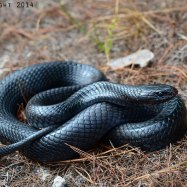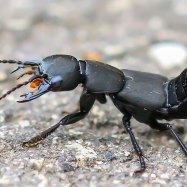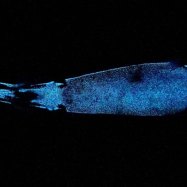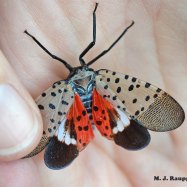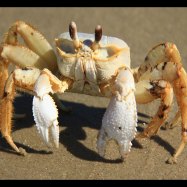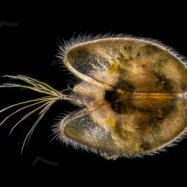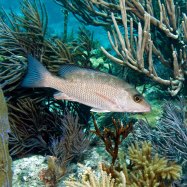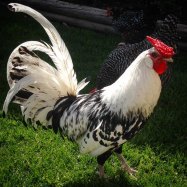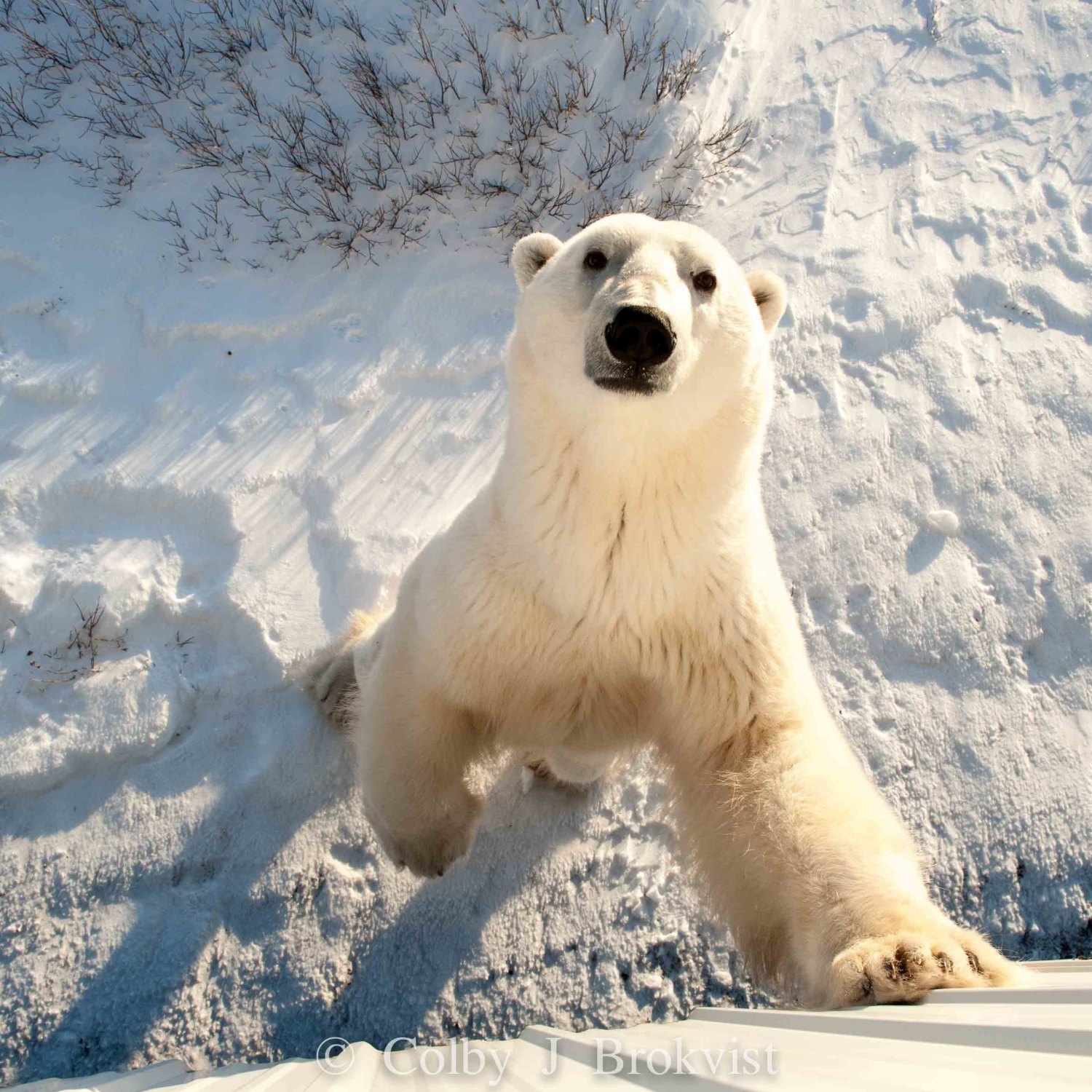
Polar Bear
2.4 - 3 meters
Did you know that the majestic Polar Bear, also known as the Ice Bear, can grow up to 3 meters in length and weigh over 1,500 pounds? These incredible creatures are found in the Polar regions and belong to the family Ursidae. With their large, stocky body shape, they are expert hunters on the ice and play a crucial role in maintaining the Arctic ecosystem. #PolarBear #Ursidae #Arctic #Wildlife.
Animal Details Summary:
Common Name: Polar Bear
Kingdom: Animalia
Habitat: Arctic regions
The Mighty Polar Bear: An Arctic Icon
From its powerful physique to its stunning white coat, the polar bear is undoubtedly one of the most iconic animals of the Arctic. This magnificent creature is the largest land carnivore on Earth and has a unique set of features that allow it to thrive in one of the harshest environments on the planet. Let's dive into the world of the polar bear and discover what makes it such a remarkable animal.The Scientific Name
The polar bear's scientific name is Ursus maritimus, which translates to "sea bear" in Latin Polar Bear. This name is a representation of its habitat and feeding method, as the polar bear predominantly lives on the sea ice and feeds on marine animals.The Common Name
The polar bear's common name, simply “Polar Bear”, is widely known and recognized by people all over the world. It comes from the Latin word "polar" which means "of or relating to the poles". This name perfectly describes the bear's geographical location, as it is found exclusively in the Arctic regions, around the North Pole.The Classification
The polar bear belongs to the Kingdom Animalia, Phylum Chordata, and Class Mammalia. Its order is Carnivora, meaning it is a carnivorous animal, and its family is Ursidae, which includes all bear species. Interestingly, despite being classified as a carnivore, the polar bear has a digestive system adapted for a diet primarily composed of fatty marine mammals, making it the only bear species with such a unique feeding preference.Habitat and Distribution
The polar bear's habitat primarily consists of the Arctic regions, where it can be found in Canada, Russia, Norway, Greenland, and the United States. It is perfectly adapted to the extreme conditions of the Arctic, including the harsh temperatures and the vast stretches of sea ice Peacock Spider. The polar bear is classified as a marine mammal, as it spends most of its life on the sea ice, hunting for food.Feeding Method
As mentioned earlier, the polar bear is a carnivorous animal, and its diet mainly consists of marine animals such as ringed seals, bearded seals, and occasionally walruses and beluga whales. Its incredible sense of smell and its ability to swim long distances make it a skilled hunter of these marine mammals. However, due to the effects of climate change, the melting sea ice has made it challenging for the polar bear to hunt, causing concern for its future survival.Appearance
The polar bear's most distinctive feature is undoubtedly its striking white coat. Its fur is composed of two layers – a thick, insulating undercoat and a coarse outer coat that helps to repel water. The white color of its fur is not actually its natural pigment, but rather a result of the reflection of light. The skin under the fur is black, which helps the bear absorb heat from the sun's rays.In addition to its white fur, the polar bear has a large, stocky body shape, which is essential for withstanding the harsh Arctic climate. It also has large, padded paws that aid in walking on the slippery ice, and sharp, curved claws that help it catch prey and climb onto the sea ice.
Size and Weight
The polar bear is a massive animal, with males reaching lengths of up to 3 meters and females reaching lengths of up to 2.4 meters. On average, males weigh between 450 to 680 kilograms, while females weigh between 150 to 300 kilograms. This significant size difference between males and females is due to the male's need to compete for mating opportunities and defend their territory.The Polar Bear in Peril
Despite being one of the strongest and most well-adapted animals in the world, the polar bear's future is uncertain due to the devastating effects of climate change on its habitat. The Arctic sea ice is rapidly melting, leaving the polar bear with less time to hunt for food and causing population decline.Not only has the sea ice melted, but it is also thinning, making the bears' survival even more challenging. Pregnant females typically dig dens in the sea ice to give birth and raise their young. However, with thinner ice, these dens are collapsing, endangering both mothers and cubs. Additionally, as the sea ice melts earlier in the spring and forms later in the fall, the polar bears' fasting period is getting longer, leading to severe starvation and death.
Conservation Efforts
Thankfully, numerous conservation efforts are in place to help protect and preserve polar bears and their habitat. These efforts include monitoring and tracking populations, reducing human-bear conflicts, and raising awareness about climate change and its effects on the polar bear.Some countries, like Canada, have also implemented strict hunting quotas to ensure the polar bear population does not decline. These quotas are based on scientific data and are closely monitored to prevent over-hunting. In addition to this, organizations and researchers are working on finding sustainable solutions to combat the impacts of climate change on the polar bear's habitat.
The Iconic Arctic Creature – A Symbol of Strength and Adaptability
The Polar Bear is not just a magnificent animal; it is also a symbol of strength and adaptability. Its ability to thrive in one of the harshest environments on Earth is truly remarkable. However, as our planet continues to face the consequences of climate change, the polar bear's future is at risk.It is essential to take action to protect and preserve these incredible creatures. We must all make an effort to reduce our carbon footprint and promote sustainable practices that will help slow down the effects of climate change. By doing so, we can help save the polar bear and ensure future generations get to witness this amazing animal in all its glory.

Polar Bear
Animal Details Polar Bear - Scientific Name: Ursus maritimus
- Category: Animals P
- Scientific Name: Ursus maritimus
- Common Name: Polar Bear
- Kingdom: Animalia
- Phylum: Chordata
- Class: Mammalia
- Order: Carnivora
- Family: Ursidae
- Habitat: Arctic regions
- Feeding Method: Carnivorous
- Geographical Distribution: Arctic Circle
- Country of Origin: Canada, Russia, Norway, Greenland, United States
- Location: Polar regions
- Animal Coloration: White
- Body Shape: Large, stocky
- Length: 2.4 - 3 meters
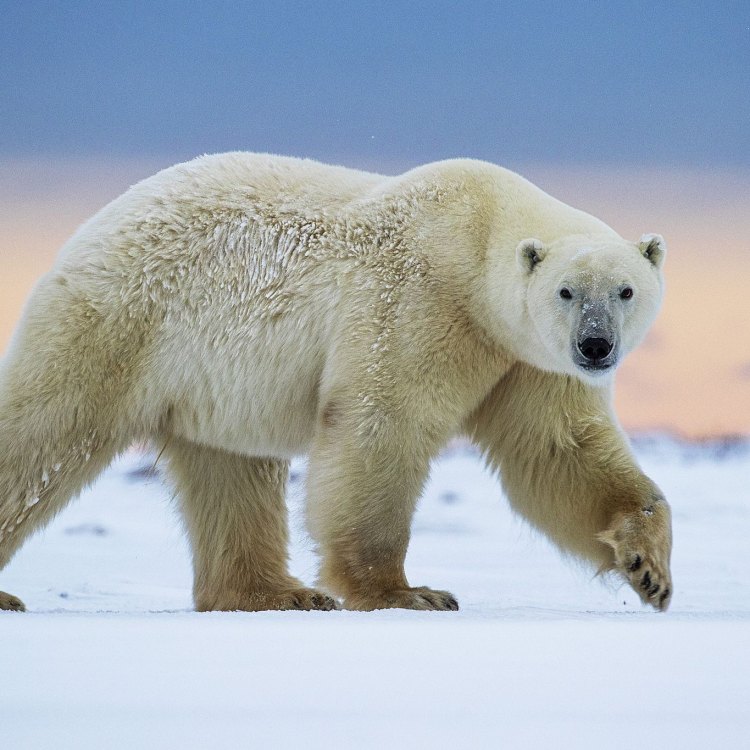
Polar Bear
- Adult Size: Female: 250 - 600 kg, Male: 350 - 680 kg
- Average Lifespan: 25 - 30 years
- Reproduction: Sexual
- Reproductive Behavior: Polygamous
- Sound or Call: Roar, growl, chuff
- Migration Pattern: Seasonal migration
- Social Groups: Solitary
- Behavior: Predatory
- Threats: Climate change, hunting
- Conservation Status: Vulnerable
- Impact on Ecosystem: Apex predator
- Human Use: Hunting, tourism
- Distinctive Features: Thick fur, webbed feet, sharp claws
- Interesting Facts: The largest land predator, excellent swimmers
- Predator: No natural predators
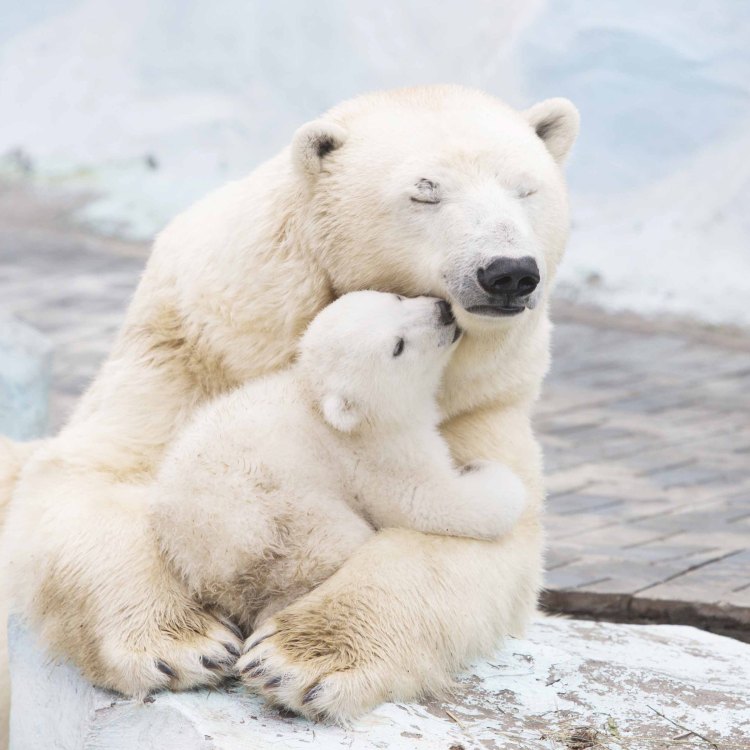
Ursus maritimus
The Mighty Polar Bear: A Symbol of Strength and Resilience
The polar bear, also known as the "sea bear" or "ice bear," is a majestic and awe-inspiring creature that inhabits the Arctic regions. It is the largest species of bear on Earth and is truly a sight to behold. With its thick white fur, webbed feet, and sharp claws, the polar bear is perfectly adapted to survive in harsh, icy environments. But despite its remarkable physical characteristics, this magnificent animal is facing numerous threats that endanger its existence PeaceOfAnimals.Com.In this article, we will dive into the unique features of polar bears and explore their behavior, habitat, and the challenges they are currently facing. Let's embark on a journey to discover the wonders of the polar bear.
The Mighty Polar Bear: A Physical Marvel
Let's begin by talking about the polar bear's impressive physical characteristics. Adult female polar bears can weigh anywhere between 250 to 600 kilograms, while males can weigh between 350 to 680 kilograms, making them the largest land predators in the world. They can reach a height of 10 feet, standing on their hind legs, and a length of 7 feet from nose to tail. This formidable size allows them to hunt and dominate their prey with ease.One of the most distinctive features of a polar bear is its thick, white fur. This fur not only provides insulation against the frigid Arctic temperatures but also camouflages them in the snow, allowing them to sneak up on their prey. The polar bear's fur is actually transparent and appears white due to air pockets in each hair shaft that reflects light Peacock Butterfly. This adaptation makes them almost invisible from a distance, giving them a significant advantage in their hunting efforts.
Another unique feature of the polar bear is its webbed feet. These webbed paws act as paddles when swimming, allowing them to navigate in the icy waters with ease. They can also spread their toes apart to create a larger surface area, which increases their ability to swim efficiently. Their feet are also equipped with sharp claws that help them grip on the ice and catch their prey.
The Social Lives of Polar Bears
Polar bears are solitary animals, meaning they live and hunt by themselves. However, they do come together during the breeding season, which usually takes place between April and May. During this time, males engage in a polygamous reproductive behavior, meaning they mate with multiple females.After mating, a female polar bear will dig a den in the snow to give birth and protect her cubs from the harsh environment. Cubs are typically born in December and weigh only about one kilogram at birth. They stay with their mother for two to three years, learning essential survival skills before venturing off on their own.
While polar bears may not socialize much, they do have a unique way of communicating with each other. They produce various sounds, including roars, growls, and chuffs. These sounds serve as a form of communication, allowing them to attract mates, establish dominance, and warn others of danger.
A Day in the Life of a Polar Bear
Polar bears are apex predators, meaning they are at the top of the food chain. As carnivorous animals, they primarily feed on seals, their main source of food. They use their excellent sense of smell to locate breathing holes in the ice where seals come up for air, waiting patiently for their next meal.They also have an incredible sense of hearing and can detect the pulse of a seal under the ice from a distance of almost a mile away. Once a polar bear spots its prey, it will stealthily approach and use its powerful claws and jaws to catch and kill the seal.
Polar bears are also known for their incredible swimming abilities, able to cover many miles in search of food. In fact, they can swim at speeds of up to six miles per hour and can stay submerged for several minutes at a time.
When not hunting, polar bears spend most of their time resting or conserving energy. They have a lower metabolic rate compared to other bears, allowing them to survive for long periods without food.
Threats to the Mighty Polar Bear
Despite being the largest land predator, polar bears are not invincible. They face several threats that jeopardize their survival, one of which is climate change. Polar bears rely on sea ice for hunting, breeding, and resting. As the Arctic sea ice continues to melt due to rising global temperatures, polar bears are losing their habitat, putting their survival at risk.The increased melting of Arctic sea ice is also causing a decline in the polar bear's main food source, seals. As a result, polar bears are forced to travel longer distances to find food, resulting in starvation and malnutrition. The decline in food availability also leads to a higher risk of cub mortality, as mothers struggle to produce enough milk to nourish their young.
Another significant threat to polar bears is hunting and poaching. Although hunting of polar bears is highly regulated, it still occurs in some areas, primarily for their fur and as a trophy for sport hunting. Poaching for their body parts, such as their claws and teeth, also contributes to their decline in numbers.
Conservation Efforts for the Polar Bear
In 2006, the International Union for Conservation of Nature (IUCN) listed polar bears as a vulnerable species on their Red List of Threatened Species. According to a study by the U.S. Geological Survey, the polar bear population is expected to decline by 30% by 2050 due to the effects of climate change.To prevent this decline, various organizations and governments are implementing conservation efforts to protect polar bears and their habitat. One of the most critical steps is reducing carbon emissions to slow down the rate of global warming and preserve sea ice. Other measures include the creation of protected areas and strict regulations on hunting and poaching.
The Human Connection to Polar Bears
Polar bears have long been an important aspect of human culture and mythology. They have been depicted in various forms of art and have been a significant source of inspiration for stories and legends. However, besides these cultural connections, humans also have a direct impact on polar bears.Aside from contributing to climate change, humans also pose a significant threat to polar bears through hunting and tourism. Hunting for polar bear fur and body parts is still prevalent in some regions and contributes to their declining population. On the other hand, tourism in the Arctic can also disrupt polar bears' natural behavior and cause stress, especially during the breeding season.
Fun Facts About Polar Bears
- The scientific name for polar bears is "Ursus maritimus," which means "sea bear."- Polar bears are excellent swimmers, and they can swim for several days in a row and cover hundreds of miles.
- They have 42 teeth, which they use to catch and eat their prey.
- Unlike other bear species, polar bears do not hibernate in the winter. Instead, they continue to be active while adapting to the harsh climate.
- Polar bears are not territorial animals. However, they can become aggressive during the breeding season or when competing for food.
- They have no natural predators, making them the ultimate apex predator in their habitat.
In Conclusion
The polar bear is undeniably a magnificent creature, perfectly adapted to survive in the harshest environments on Earth. However, the challenges posed by climate change, hunting, and other human activities threaten this incredible animal's existence. It is up to us to take action and protect this apex predator, ensuring that future generations can still witness its beauty and strength in the Arctic. Let's work together to preserve the mighty polar bear and all of the unique wonders it brings to our world.
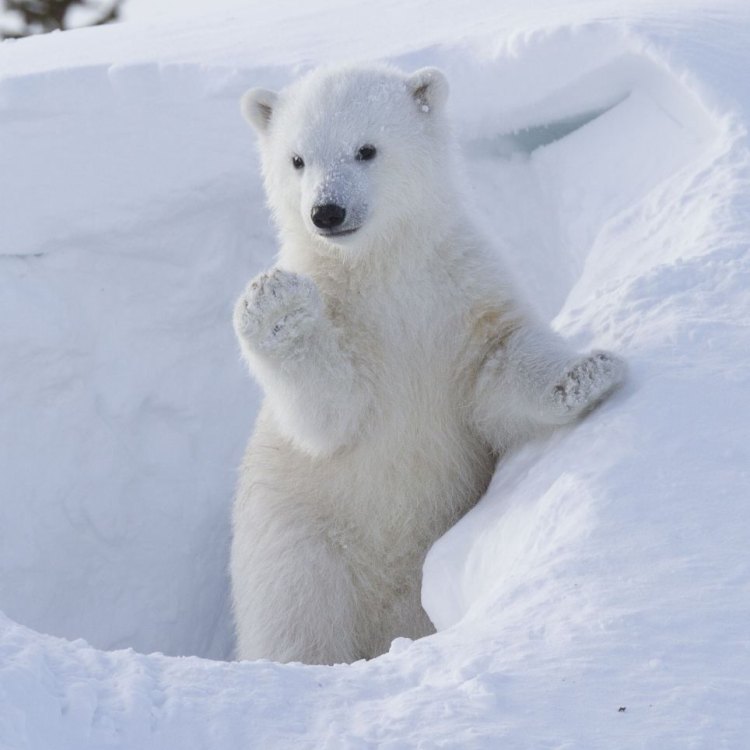
The Mighty Polar Bear: An Arctic Icon
Disclaimer: The content provided is for informational purposes only. We cannot guarantee the accuracy of the information on this page 100%. All information provided here may change without prior notice.


